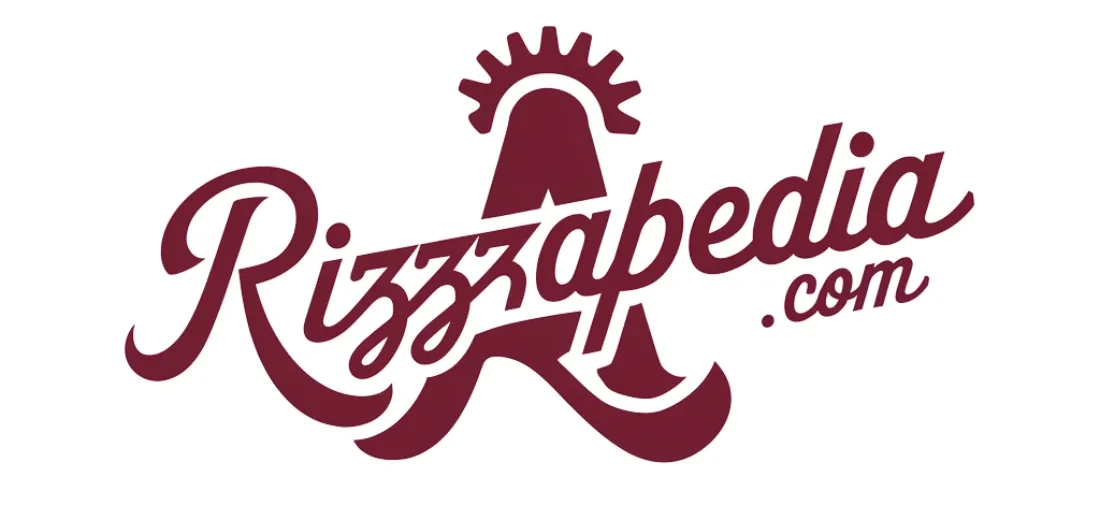The creative industry faces a productivity crisis. Designers spend more time hunting for usable graphics than actually designing. Marketing teams often burn through their budget on rushed custom work. Development projects stall waiting for visual assets that never quite fit technical requirements.
Meanwhile, illustration platforms multiply like digital weeds. Each promises to solve everything while delivering incremental improvements on fundamentally flawed approaches. The market drowns in quantity while starving for quality solutions.
Icons8’s Ouch enters this saturated space with bold claims about revolutionizing visual workflows. But revolutionary products are rare. Which category does Ouch occupy?
Questioning the Status Quo: Why Current Systems Fail
Standard illustration procurement operates on antiquated assumptions. Massive static libraries, rigid licensing terms, take-it-or-leave-it visual elements. This model worked when web design meant simple layouts and print dominated professional communication.
Today’s multi-platform, responsive, brand-conscious environment demands flexibility that traditional stock libraries cannot provide. Static assets become liabilities when projects require rapid iteration, brand alignment, and cross-platform consistency.
Ouch rejects these limitations entirely. Rather than providing finished illustrations, it delivers visual construction kits. Individual components—characters, backgrounds, objects, effects—exist as separate, manipulable elements that creators can combine and customize freely.
This component-based approach transforms the designer-asset relationship from passive consumption to active creation. Visual elements serve creative vision instead of constraining it. Brand guidelines drive customization instead of being sacrificed for available inventory.
Technical implementation supports this creative freedom through sophisticated file architecture. Vector graphics maintain their editable structure through unlimited modifications. Color systems propagate changes across all related elements instantly. Animation components integrate seamlessly with static elements for dynamic storytelling.
Industry Applications: Solving Real Business Problems
Development Environments: Eliminating Designer-Developer Conflicts
Software development teams know this painful cycle: receive design mockups featuring attractive illustrations, discover those exact illustrations don’t exist in usable formats, and compromise on visual quality to meet launch deadlines.
Ouch breaks this cycle through developer-centric technical specifications. Clean SVG structure supports programmatic manipulation. Consistent naming conventions enable automated asset processing. Multiple export formats ensure compatibility across frameworks without conversion overhead.
API integration transforms visual asset management from a manual burden to an automated workflow component. Development teams integrate illustrations directly into build processes and content management systems. Performance characteristics remain predictable across different implementation contexts.
Marketing Operations: Scaling Content Without Sacrificing Brand Identity
Content marketing faces an impossible equation: increasing output demands while maintaining consistent brand presentation across expanding channel portfolios. Traditional approaches create bottlenecks that limit content velocity.
Ouch’s modular system enables rapid content creation without brand compromise. Marketing teams start with brand-aligned base illustrations and customize them for different platforms, campaigns, and audiences. Color schemes adapt automatically. Layout elements rearrange for various aspect ratios.
Production speed increases exponentially when teams can iterate visually in real-time. Campaign concepts get tested immediately. Seasonal adjustments happen instantly. Competitive responses don’t require emergency design resources or budget reallocations.
Educational Contexts: Visual Learning That Enhances Understanding
Academic institutions struggle with visual content that supports learning objectives rather than merely decorating educational materials. Generic business stock photography fails in educational contexts.
Ouch addresses these specialized requirements through academically-focused collections organized around educational subjects. The river clipart section provides geographically accurate hydrological representations suitable for earth science, geography, and environmental studies curricula.
Customization becomes essential for a practical educational application. Instructors modify illustrations to emphasize specific learning points without commissioning expensive custom artwork, and teaching watershed management. Highlight different drainage areas using color coding.
Entrepreneurial Ventures: Professional Credibility Within Startup Constraints
New businesses confront harsh realities about visual presentation standards. Professional appearance directly influences customer trust, investor confidence, and market credibility. Yet custom design work typically exceeds early-stage budgets.
Ouch provides economically sustainable alternatives that maintain professional standards throughout business development phases. Free usage supports MVP development—subscription pricing scales with business growth rather than demanding prohibitive upfront investments.
The component-based approach accommodates rapid business evolution and strategic pivoting. Visual identity elements can be established early and adapted as products, positioning, and market focus evolve.
Technical Innovation: Engineering for Professional Workflows
Advanced Editing Capabilities: Desktop Quality in Browser Environments
Web-based creative tools traditionally suffer from performance limitations that frustrate professional users. Mega Creator overcomes these constraints through an optimized architecture that delivers professional-grade responsiveness within browser environments.
Real-time manipulation provides immediate visual feedback without processing delays. This performance enables creative iteration at professional speeds. Non-technical team members can make sophisticated visual adjustments without specialized software training.
Collaborative functionality becomes practical when multiple users can work simultaneously without performance degradation. Creative decision-making accelerates when stakeholders can see modifications immediately.
Universal Technical Compatibility: Format Support That Works
Platform compatibility determines real-world usability more than feature marketing typically acknowledges. Ouch addresses this through a comprehensive format support that functions reliably across diverse technical environments.
Advanced animation formats like Lottie JSON enable sophisticated motion graphics without bandwidth costs. Professional integration through After Effects files supports complex motion graphics workflows. Standard compatibility through GIF and MOV formats ensures universal usability.
File optimization receives systematic attention throughout the export process. Illustrations load efficiently without compromising visual quality or creating mobile performance issues.
Value Proposition Analysis: Measuring Real Business Impact
Workflow Efficiency Quantification
Platform effectiveness must be measured through actual productivity improvements rather than feature comparisons. Ouch addresses specific bottlenecks that create measurable inefficiencies in professional creative workflows.
Asset discovery time decreases substantially through intelligent organization. Brand consistency improves through systematic style coherence. Production velocity increases through customization capabilities that eliminate repetitive workflows.
Time savings often justify platform costs independently, before considering quality improvements or brand consistency benefits.
Financial Impact Assessment
Comprehensive platform evaluation requires analysis of total economic impact rather than simple subscription cost comparisons. Direct cost savings from reduced custom design requirements frequently exceed platform expenses by substantial margins.
Indirect benefits from improved workflow efficiency enable higher-value activities. Brand value improvements from consistent visual presentation support marketing effectiveness and professional credibility.
Competitive Market Analysis
The visual asset marketplace includes diverse approaches to content management and customization capabilities. Some competitors emphasize massive content volumes with minimal customization options. Others prioritize animation capabilities but lack visual consistency.
Ouch occupies a specific market niche focused on systematic customization combined with professional-grade technical implementation. This combination addresses particular workflow challenges that alternative platforms handle inadequately.
Implementation Strategy: Practical Deployment Framework
Successful platform adoption requires a realistic evaluation of current capabilities and organizational constraints. Visual content needs vary dramatically across industries, team sizes, and project types.
Organizations with regular illustration requirements typically derive maximum value from comprehensive platform capabilities. Technical sophistication levels affect implementation success across different organizational contexts.
Platform optimization demands systematic approaches rather than random usage patterns. Clear guidelines for asset selection and customization maintain visual consistency across projects and team members.
Critical Evaluation: Boundaries and Limitations
No platform addresses every visual communication requirement regardless of feature comprehensiveness. Highly specialized content often demands illustration approaches that exceed general stock modification capabilities.
Industry-specific requirements sometimes require precision that general illustration libraries cannot provide through customization alone. Honest evaluation helps organizations determine when platform solutions work effectively versus when custom alternatives become necessary.
The illustration ecosystem offers various approaches to asset management with different strengths and limitations. Understanding available options enables informed decisions based on specific organizational needs.
Future Development: Evolution and Adaptation
Digital design continues evolving with emerging technologies and changing user expectations. Platform evaluation should consider development roadmaps alongside current capabilities to avoid future migration requirements.
Animation and motion graphics become increasingly crucial as digital experiences incorporate more dynamic elements. Platform flexibility affects adaptation to changing organizational needs without forcing migration to different solutions.
Icons8’s Ouch represents a systematic approach to visual asset management, addressing genuine productivity challenges in professional creative environments. Strategic value depends on realistic organizational assessment and systematic deployment leveraging platform strengths while acknowledging inherent limitations.
The creative industry benefits from platforms solving actual productivity problems rather than adding unnecessary complexity. Ouch advances in this direction, though ultimate value depends on alignment with specific operational needs and resource constraints.
Also Read- Longevity Supplements: Enhancing Healthspan and Lifespan through Science










